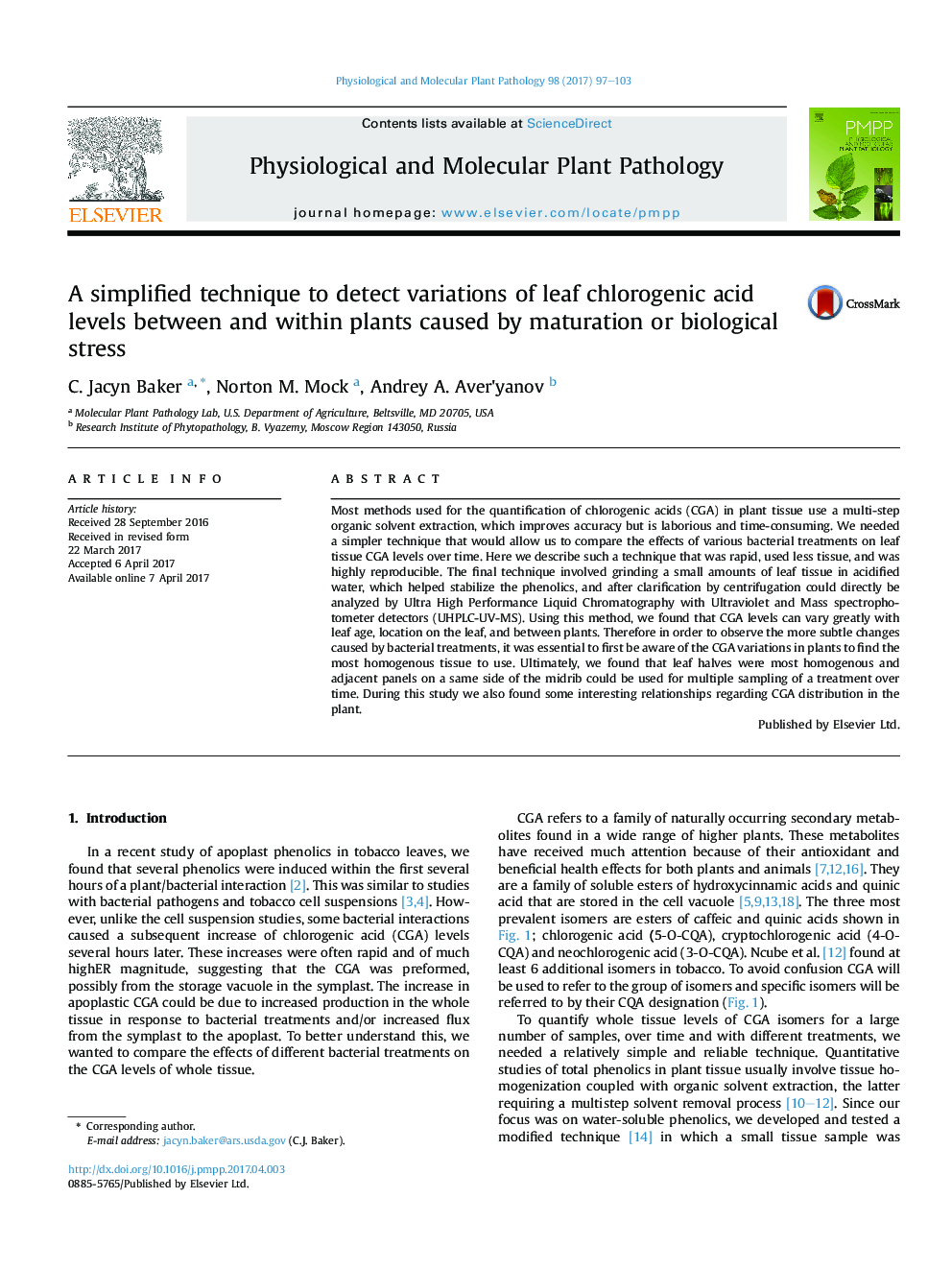| Article ID | Journal | Published Year | Pages | File Type |
|---|---|---|---|---|
| 5592613 | Physiological and Molecular Plant Pathology | 2017 | 7 Pages |
Abstract
Most methods used for the quantification of chlorogenic acids (CGA) in plant tissue use a multi-step organic solvent extraction, which improves accuracy but is laborious and time-consuming. We needed a simpler technique that would allow us to compare the effects of various bacterial treatments on leaf tissue CGA levels over time. Here we describe such a technique that was rapid, used less tissue, and was highly reproducible. The final technique involved grinding a small amounts of leaf tissue in acidified water, which helped stabilize the phenolics, and after clarification by centrifugation could directly be analyzed by Ultra High Performance Liquid Chromatography with Ultraviolet and Mass spectrophotometer detectors (UHPLC-UV-MS). Using this method, we found that CGA levels can vary greatly with leaf age, location on the leaf, and between plants. Therefore in order to observe the more subtle changes caused by bacterial treatments, it was essential to first be aware of the CGA variations in plants to find the most homogenous tissue to use. Ultimately, we found that leaf halves were most homogenous and adjacent panels on a same side of the midrib could be used for multiple sampling of a treatment over time. During this study we also found some interesting relationships regarding CGA distribution in the plant.
Related Topics
Life Sciences
Agricultural and Biological Sciences
Plant Science
Authors
C. Jacyn Baker, Norton M. Mock, Andrey A. Aver'yanov,
